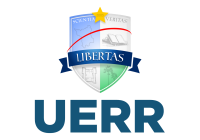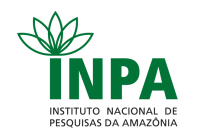Corpo Discente - Egressos
Erick Cristofore Guimaraes
| Título | TAXONOMIA INTEGRATIVA DAS ESPÉCIES E POPULAÇÕES DO CLADO HYPHESSOBRYCON “ROSY TETRA” QUE OCORREM NA REGIÃO HIDROGRÁFICA ATLÂNTICO NORDESTE OCIDENTAL E DRENAGENS ADJACENTES | ||||||||||||||||||||||||
| Data da Defesa | 02/10/2020 | ||||||||||||||||||||||||
| Download | Em sigilo | ||||||||||||||||||||||||
Banca
| |||||||||||||||||||||||||
| Palavras-Chaves | delimitação de espécies. DNA-barcoding. Hyphessobrycon sensu stricto | ||||||||||||||||||||||||
| Resumo | A Ordem Characiformes é um dos componentes da fauna aquática com o maior número de espécies, com aproximadamente 3.700 espécies válidas formada por quatro famílias africanas e 20 neotropicais. Dentre os Characiformes, a Família Characidae e a mais diversa e problemática em ternos taxonômicos, com cerca de 1.200 espécies (representando aproximadamente 58% das espécies entre os Characiformes), e a quarta família mais diversa de peixes, após Cyprinidae, Cichlidae e Gobiidae. Dentro da família Characidae, Hyphessobrycon é um bom exemplo de grupo problemático, onde as relações dentro das espécies desse gênero se apresentam ainda um tanto inconclusivas. Hyphessobrycon é um dos gêneros mais ricos em espécies de Characidae, atualmente compreendendo aproximadamente 160 espécies válidas. São amplamente distribuídos ao longo das bacias hidrográficas da região Neotropical, do sul do México até bacia do rio da Prata no nordeste da Argentina. Uma maneira de superar a taxonomia confusa de grupos problemáticos, ter precisão na identificação de espécies e estimativas de diversidade de grupos de espécies é usar critérios operacionais para delimitação de espécies. O aprimoramento do conhecimento sistemático, taxonômico e de distribuição da Ictiofauna é de fundamental relevância no contexto atual do desenvolvimento brasileiro, principalmente para o campo da conservação das espécies. Os ambientes naturais sofrem com a acelerada destruição e consequente extinção e perda de espécies conhecidas e até mesmo de espécies ainda não conhecidas para a ciência. Sendo assim, o objetivo principal deste projeto é ampliar o conhecimento taxonômico referente às espécies e populações do clado Hyphessobrycon “rosy tetra” que ocorrem na região hidrográfica Atlântico Nordeste Ocidental e drenagens adjacentes com base em diferentes e independentes métodos de delimitação de espécies, além de utilizar esses dados para tomar decisões taxonômicas sobre o grupo. | ||||||||||||||||||||||||
| Abstract | The Order Characiformes is one of the components of the aquatic fauna with the largest number of species, with approximately 3,700 valid species formed by four African and 20 Neotropical families. Among the Characiformes, the Characidae Family is the most diverse and problematic in taxonomic suits, with about 1,200 species (representing approximately 58% of the species among Characiformes), and the fourth most diverse family of fish, after Cyprinidae, Cichlidae and Gobiidae. Within the Characidae family, Hyphessobrycon is a good example of a problematic group, where relations within species of this genus are still somewhat inconclusive. Hyphessobrycon is one of the richest genera in species of Characidae, currently comprising approximately 160 valid species. They are widely distributed along the hydrographic basins of the Neotropical region, from southern Mexico to the Río de la Plata basin in northeastern Argentina. One way to overcome the confusing taxonomy of problem groups, to be precise in identifying species and to estimate diversity of species groups is to use operational criteria for species delimitation. The improvement of the systematic, taxonomic and distribution knowledge of the ichthyofauna is of fundamental relevance in the current context of Brazilian development, mainly for the field of species conservation. Natural environments suffer from the accelerated destruction and consequent extinction and loss of known species and even species not yet known to science. Therefore, the main objective of this project is to expand the taxonomic knowledge regarding the species and populations of the Hyphessobrycon clade “rosy tetra” that occur in the Western Northeast Atlantic hydrographic region and adjacent drainages based on different and independent species delimitation methods, in addition to use this data to make taxonomic decisions about the group. | ||||||||||||||||||||||||
Parceiros

























